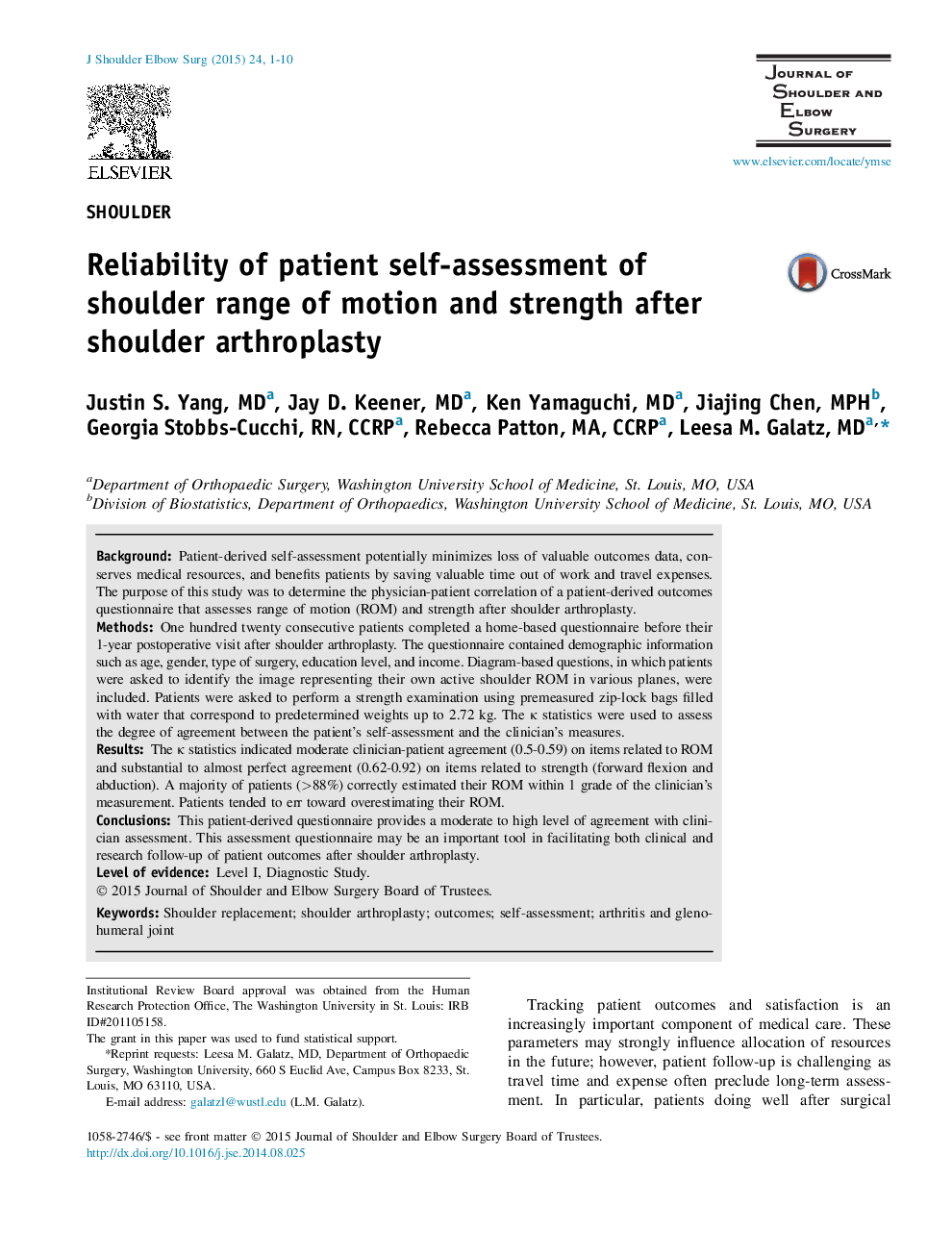| کد مقاله | کد نشریه | سال انتشار | مقاله انگلیسی | نسخه تمام متن |
|---|---|---|---|---|
| 4073795 | 1266991 | 2015 | 10 صفحه PDF | دانلود رایگان |
BackgroundPatient-derived self-assessment potentially minimizes loss of valuable outcomes data, conserves medical resources, and benefits patients by saving valuable time out of work and travel expenses. The purpose of this study was to determine the physician-patient correlation of a patient-derived outcomes questionnaire that assesses range of motion (ROM) and strength after shoulder arthroplasty.MethodsOne hundred twenty consecutive patients completed a home-based questionnaire before their 1-year postoperative visit after shoulder arthroplasty. The questionnaire contained demographic information such as age, gender, type of surgery, education level, and income. Diagram-based questions, in which patients were asked to identify the image representing their own active shoulder ROM in various planes, were included. Patients were asked to perform a strength examination using premeasured zip-lock bags filled with water that correspond to predetermined weights up to 2.72 kg. The κ statistics were used to assess the degree of agreement between the patient's self-assessment and the clinician's measures.ResultsThe κ statistics indicated moderate clinician-patient agreement (0.5-0.59) on items related to ROM and substantial to almost perfect agreement (0.62-0.92) on items related to strength (forward flexion and abduction). A majority of patients (>88%) correctly estimated their ROM within 1 grade of the clinician's measurement. Patients tended to err toward overestimating their ROM.ConclusionsThis patient-derived questionnaire provides a moderate to high level of agreement with clinician assessment. This assessment questionnaire may be an important tool in facilitating both clinical and research follow-up of patient outcomes after shoulder arthroplasty.
Journal: Journal of Shoulder and Elbow Surgery - Volume 24, Issue 1, January 2015, Pages 1–10
